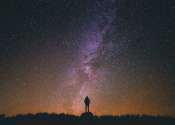Stars and skulls: New ESO image reveals eerie nebula
This ethereal remnant of a long dead star, nestled in the belly of The Whale, bears an uneasy resemblance to a skull floating through space. Captured in astounding detail by ESO's Very Large Telescope (VLT), the eerie Skull ...









